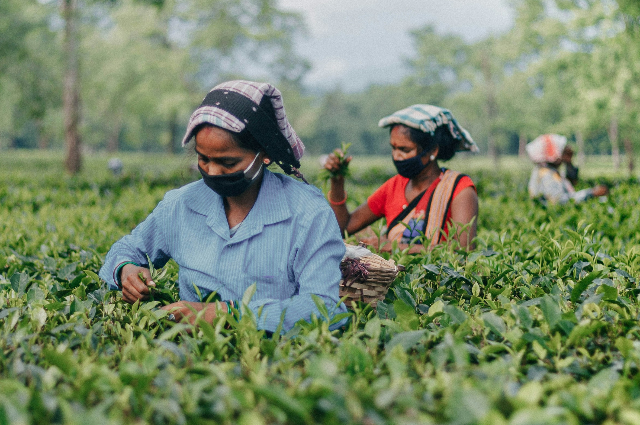
Pesticides are essential for farmers and agricultural experts because they eliminate or deter pests and other harmful organisms that can damage crops. As a result, crops remain healthier and are less likely to be destroyed by these threats. Using pesticides enables farmers to achieve higher crop yields and protect their crops more effectively.
Each pesticide has unique uses, benefits, and the variety available can make selecting the right one seem discouraging. Knowing the most commonly used types can help make this decision easier. Although all pesticides are designed to prevent or kill pests, they serve many different purposes. This wide range necessitates a classification system so that agricultural experts can understand their differences and choose the best one for their needs.
Many experts categorize pesticides based on the pests they target, using specific terms formed by adding the suffix "-cide" to the name of the pest. For instance, a pesticide that targets algae is called an algicide and one that targets fungi is known as a fungicide. This classification method is widely used because it helps in selecting a pesticide for a specific pest problem. For example, if there is a fungus issue then you would use a fungicide to address it directly.
Tea Planters in Assam Seek Government Intervention on Pesticide Use
- Meeting with the Agriculture Minister: On Sunday, a group of tea planters from Assam met with the state's Agriculture Minister, Atul Bora, to discuss the ongoing issues related to tea quality compliance. They sought the minister’s help and proposed various solutions to address the current crisis in the tea industry.
- Call to Ban Specific Pesticides: The tea planters represented by the North Eastern Tea Association submitted a memorandum to the minister. In this document, they requested a ban on the sale, storage, distribution, and use of six specific pesticides in Assam. These pesticides are Cypermethrin, Acephate, Imidacloprid, Acetamiprid, Dinotefuran, and Fipronil. The representatives emphasized that banning these chemicals is crucial for the well-being of the tea industry.
Government's Previous Actions
Earlier in the year, the Assam government had already taken strict measures against the use of Monocrotophos in tea plantations and vegetable farming. This enforcement highlighted the government's commitment to improving agricultural practices and ensuring the quality of produce.
The Role of Small Tea Growers
The memorandum pointed out that Small Tea Growers (STGs) contribute to 50% of Assam’s total green leaf production. Due to a lack of awareness, these growers sometimes use pesticides not approved for tea cultivation. The tea planters argued that the six pesticides in question are readily available in the market because they are approved for other crops which leads to their inadvertent use in tea production.
Importance of the Tea Industry
Tea is the backbone of Assam’s economy, accounting for 90% of the state’s total exports. The livelihoods of millions of people depend on the tea plantation industry. Therefore, ensuring the compliance of tea quality standards is vital not just for the economy, but also for the well-being of the population involved in this sector.
Concerns Over Residue Limits
Recent tests have shown that the levels of these six unapproved pesticides sometimes exceed the Maximum Residue Limit (MRL) in tea. This is a significant concern for both the safety of the product and the reputation of Assam's tea industry.
The tea planters in Assam have made a compelling case for government intervention to regulate pesticide use in tea cultivation. By addressing this issue, the state can protect its vital tea industry, safeguard public health, and secure the livelihoods of millions who depend on this sector.
Ensuring Food Safety in Assam's Tea Industry
- Mandatory Pesticide Testing: In early March 2024, India's food safety regulator, FSSAI, implemented a new mandate requiring the testing of specific pesticides in tea. According to tea planters, if six particular pesticides were banned that were similar to the recent ban on Monocrotophos, about 90 percent of FSSAI compliance issues in the tea sector would be resolved. This initiative aims to enhance the safety and quality of tea produced in the country.
- Industry Leadership and Advocacy: A delegation led by the Association's Chairman, Ajay Dhandharia, alongside Adviser Bidyananda Barkakoty, Vice Chairman Neeraj Jallan, and Executive Members Manoj Jallan, Amit Malpani, Sudhir Roy, Vishal Jallan, Nitin Kashyap, and Secretary Manisha Sharma, has been actively involved in advocating for these changes. Their collective efforts highlight the industry's commitment to adhering to safety regulations and improving overall standards.
The Significance of Assam's Tea Industry
Assam's tea industry is globally renowned for its rich, aromatic tea. It is a crucial source of livelihood for millions, with many people depending directly or indirectly on tea plantations. Assam is famous for producing both Traditional and CTC (Crush, Tear, Curl) varieties of tea. Approximately 25 percent of the tea produced in Assam is of dust grade, while the remainder is CTC and Traditional.
Milestones and Challenges
In 2023, Assam's tea plantation sector celebrated 200 years of history. Despite this milestone, the industry faces significant challenges. Rising production costs, stagnant consumption rates, low prices, and crop quality issues are persistent problems. Furthermore, the industry must maintain its competitiveness in the global market which is no small accomplishment given the cost-intensive nature of tea production. Fixed costs constitute about 60-70 percent of the total investment in the tea business.
Production and Economic Contribution
Assam produces nearly 700 million kilograms of tea annually, contributing to roughly half of India's total tea production. The state also generates substantial foreign exchange revenue that amounts to approximately Rs 3,000 crore annually. Despite these impressive figures, the industry continues to strive for improvements in quality, compliance, and market stability.
Steps taken by FSSAI and the proactive stance of industry leaders are crucial for addressing the current challenges faced by Assam's tea industry. Ensuring pesticide compliance and enhancing the quality of tea will help sustain this vital sector, which plays a significant role in India's economy and cultural heritage.
. . .
References:
